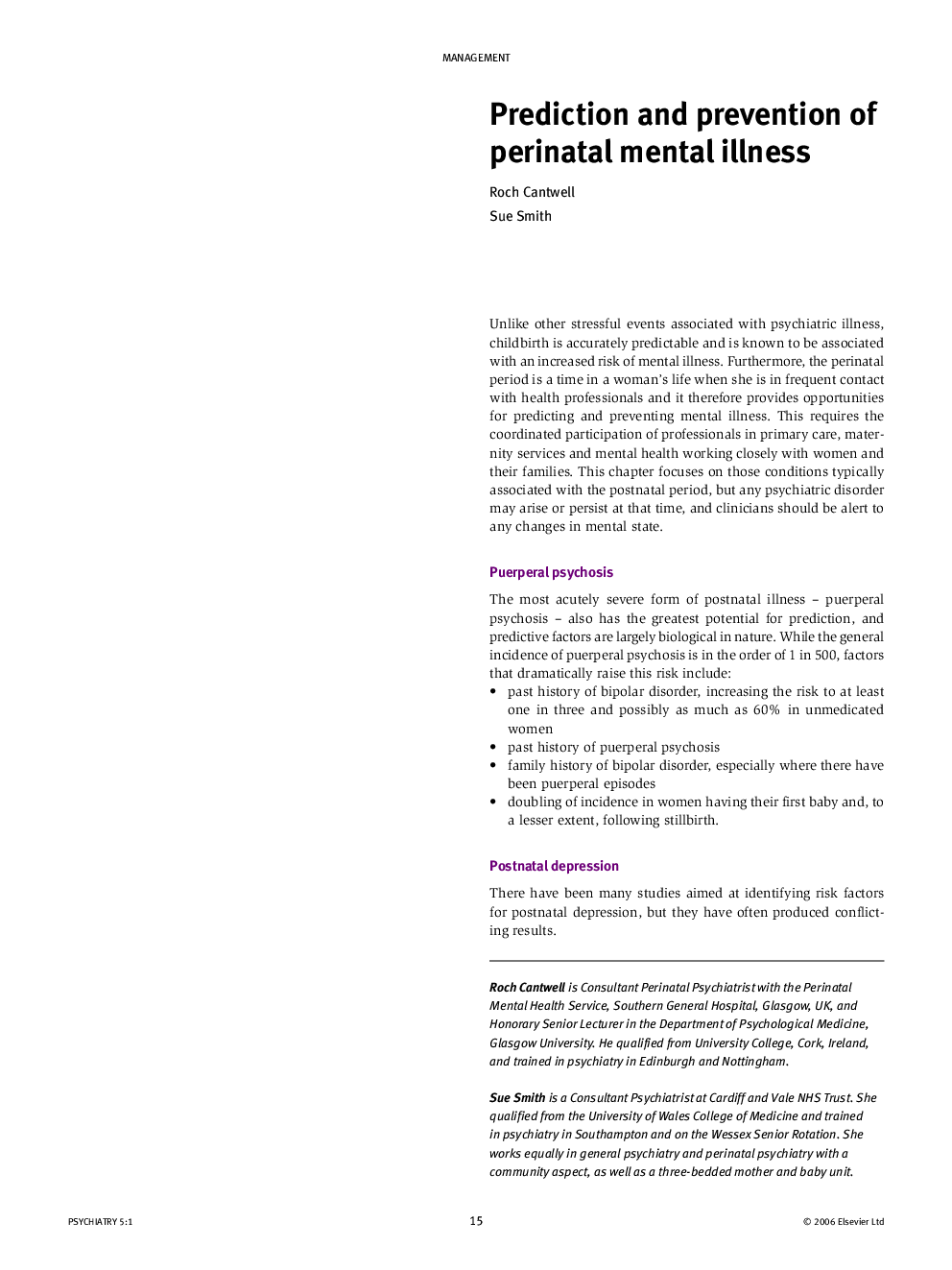| Article ID | Journal | Published Year | Pages | File Type |
|---|---|---|---|---|
| 4190376 | Psychiatry | 2006 | 7 Pages |
This contribution looks at whether the psychiatric disorders that occur around childbirth can be predicted and if so can they be prevented. Childbirth does present a risk to a woman's mental health and the most serious psychiatric condition associated with it, puerperal psychosis, is particularly predictable with a past history of bipolar disorder increasing the risk to at least 1 in 3. The less severe types of postnatal depression are not so predictable, though there are certain factors that seem to increase risk. These can be biological, obstetric and psychosocial but it has not yet been possible to use these to develop a powerful enough antenatal questionnaire which would predict women at risk. Prevention is divided into primary, secondary and tertiary and the article discusses possible strategies for women at risk. Universal primary prevention targets the population as a whole, selective all pregnant women and indicated just those at risk. Secondary prevention involves screening which does have its limitations and these are considered. The Edinburgh postnatal depression scale is widely used since it was developed in 1987 on the realisation that traditional depression scales were not suitable for depression occurring postnatally. There is some controversy over this and this is also discussed briefly. Tertiary prevention looks at how to minimize the effects of a condition which has already occurred with appropriate management and treatment. Finally there is a mention of how integrated care pathways can be used to facilitate screening and planning of care.
